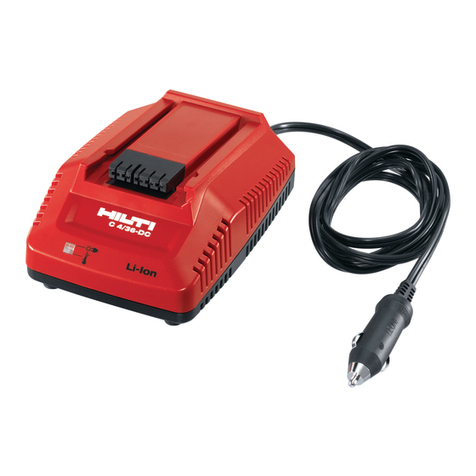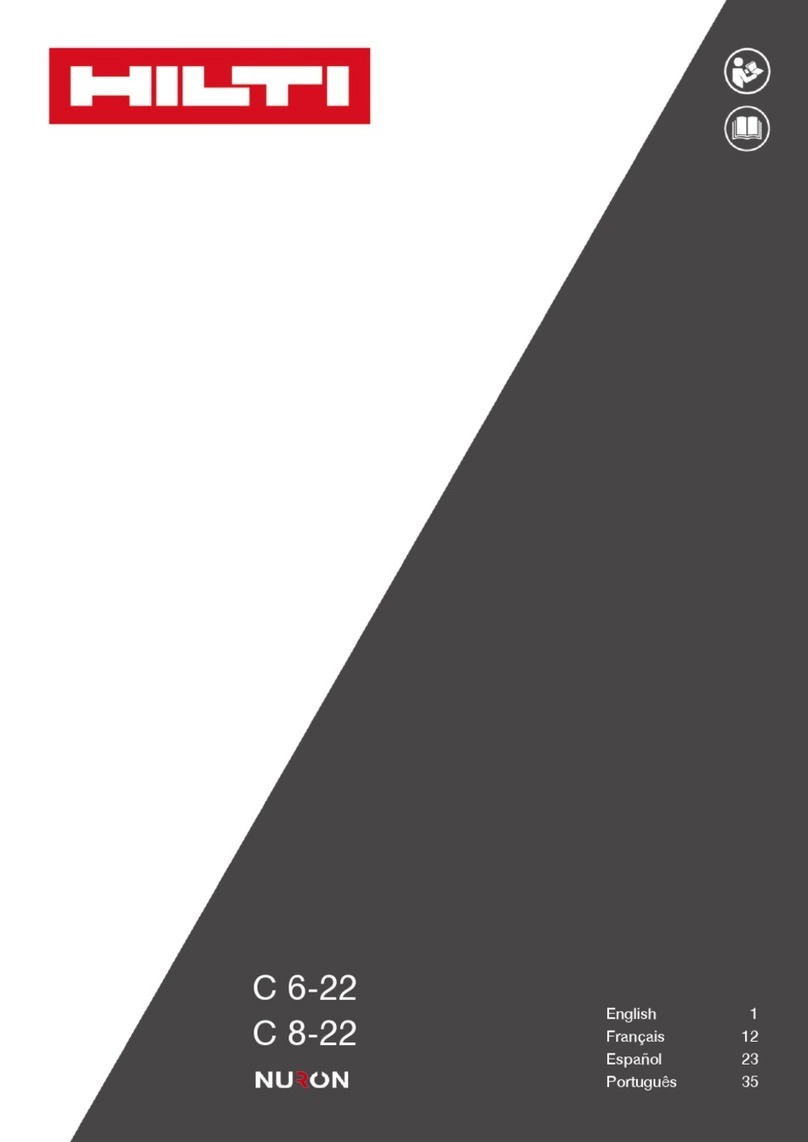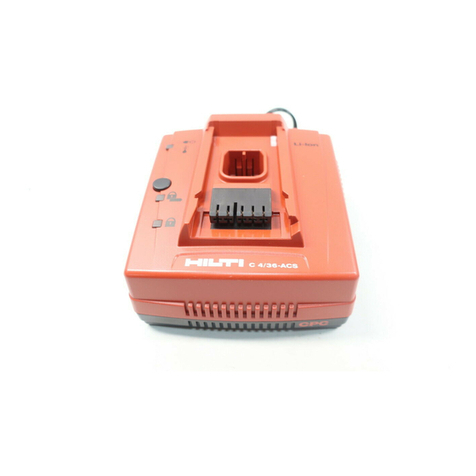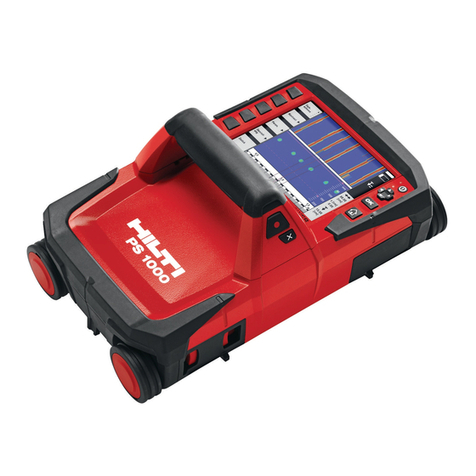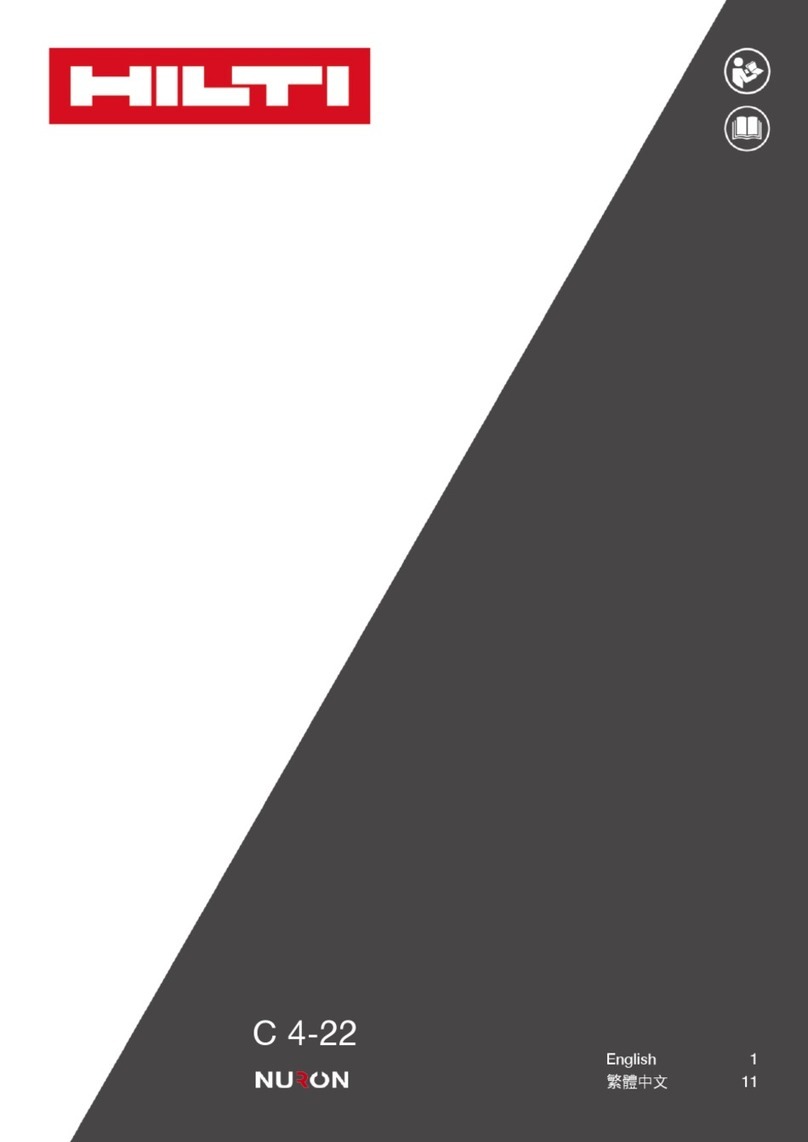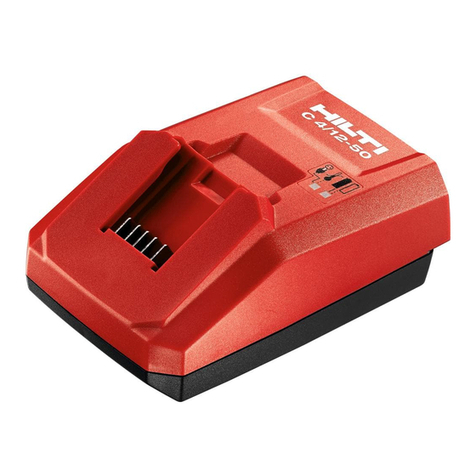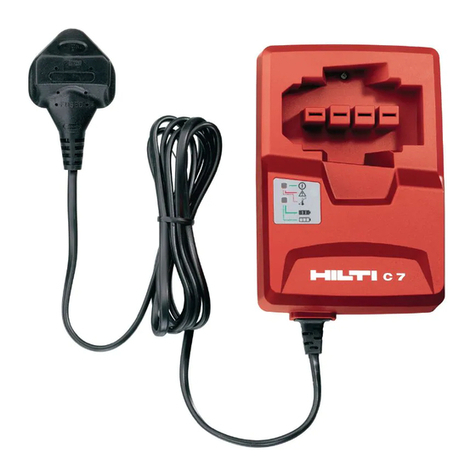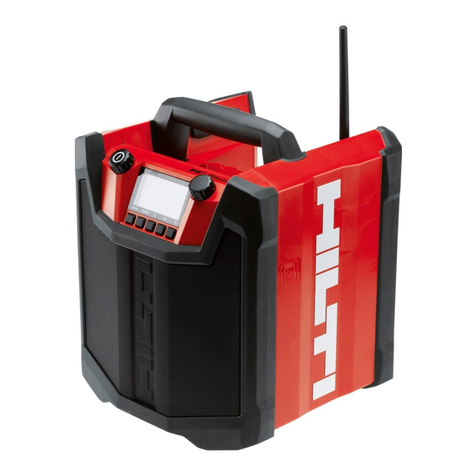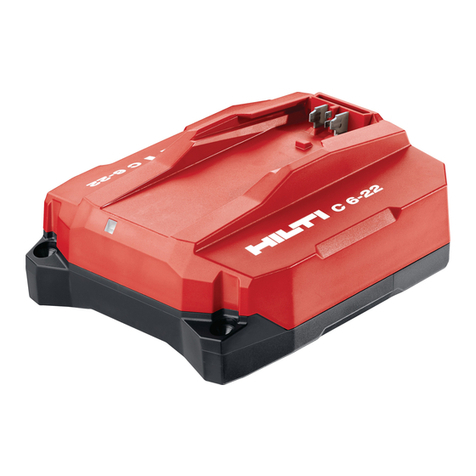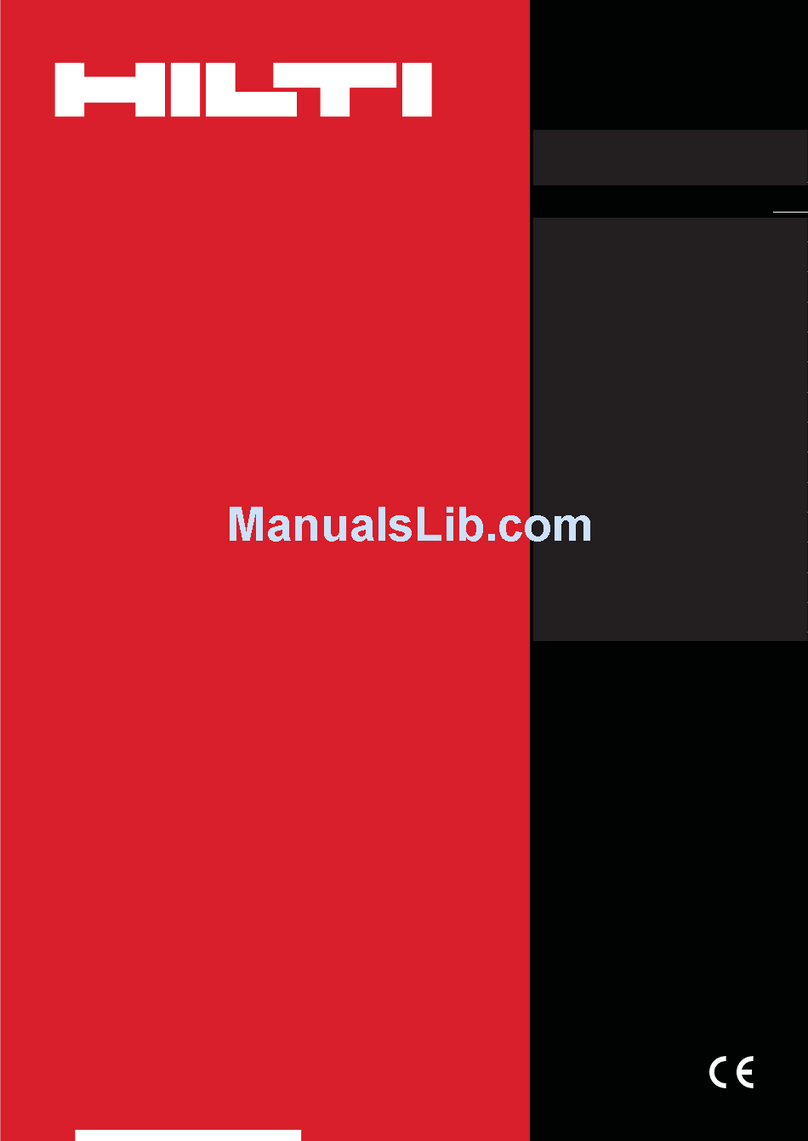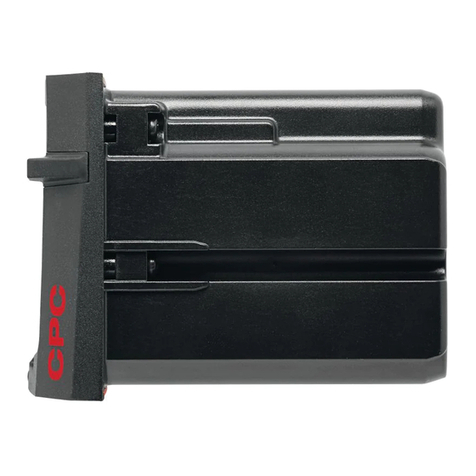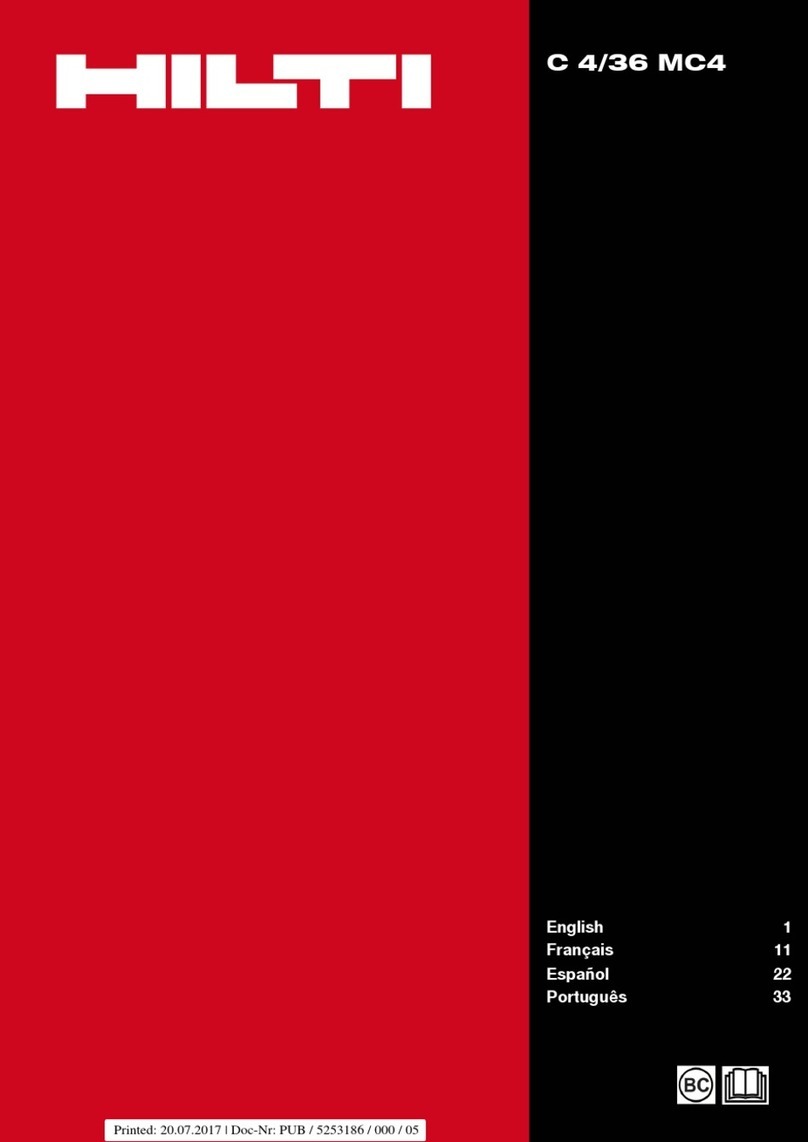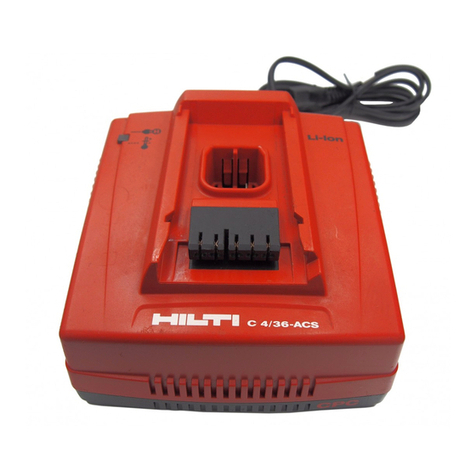English 3
▶If devices are provided for the connection of dust extraction and collection facilities, ensure these
are connected and properly used. Use of dust collection can reduce dust-related hazards.
Power tool use and care
▶Do not force the power tool. Use the correct power tool for your application. The correct power tool
will do the job better and safer at the rate for which it was designed.
▶Do not use the power tool if the switch does not turn it on and off. Any power tool that cannot be
controlled with the switch is dangerous and must be repaired.
▶Disconnect the plug from the power source from the power tool before making any adjustments,
changing accessories, or storing power tools. Such preventive safety measures reduce the risk of
starting the power tool accidentally.
▶Store idle power tools out of the reach of children and do not allow persons unfamiliar with the
power tool or these instructions to operate the power tool. Power tools are dangerous in the hands
of untrained users.
▶Maintain power tools. Check for misalignment or binding of moving parts, breakage of parts and
any other condition that may affect the power tool’s operation. If damaged, have the power tool
repaired before use. Many accidents are caused by poorly maintained power tools.
▶Keep cutting tools sharp and clean. Properly maintained cutting tools with sharp cutting edges are
less likely to bind and are easier to control.
▶Use the power tool, accessories and tool bits etc. in accordance with these instructions, taking
into account the working conditions and the work to be performed. Use of the power tool for
operations different from those intended could result in a hazardous situation.
2.2 Battery charger use and care
▶To avoid injury, use the charger only to charge Hilti Li-ion batteries approved for use with this charger.
▶The location at which the charger is used should be clean and cool but protected from frost.
▶The charger must be able to emit heat while in operation. The air vents must therefore remain
unobstructed. Accordingly, remove the charger from the toolbox. Do not operate the charger inside a
closed container.
▶Maintain the appliance carefully. Check to ensure that no parts are broken or damaged in such a way
that the appliance may no longer function correctly. If parts are damaged, have the parts repaired before
using the appliance.
▶Use chargers and the corresponding batteries in accordance with these instructions and as is specified
for this particular model. Use of chargers for applications different from those intended could result in
hazardous situations.
▶Recharge the batteries only with the chargers specified by the manufacturer. A charger that is suitable
for a certain type of battery may present a risk of fire when used with other types of battery.
▶When not in use, keep the battery and the charger away from paper clips, coins, keys, nails, screws
or other small metal objects that could cause a short circuit at the battery terminals or the charging
contacts. A short circuit between the battery terminals or charging contacts may cause injuries (burns)
and result in fire.
▶Under abusive conditions, liquid may be ejected from the battery. Avoid contact with the liquid. If contact
accidentally occurs, flush with water. If the liquid contacts the eyes, also seek medical attention. Liquid
leaking from the battery may cause irritation or burns.
▶Make sure that the batteries suffer no mechanical damage.
▶Do not charge or continue to use damaged batteries (e.g. batteries with cracks, broken parts, bent or
pushed-in and/or pulled-out contacts).
2.3 Careful handling and use of batteries
▶Observe the special guidelines applicable to the transport, storage and use of lithium-ion batteries.
▶Do not expose batteries to high temperatures, direct sunlight or fire.
▶Do not take apart, squash or incinerate batteries and do not subject them to temperatures over 80 °C.
▶Do not attempt to charge or continue to use damaged batteries.
▶If the battery is too hot to touch, it may be defective. In this case, place the power tool in a non-flammable
location, well away from flammable materials, where it can be kept under observation and left to cool
down. Contact Hilti Service after the battery has cooled down.
Printed: 27.10.2017 | Doc-Nr: PUB / 5129974 / 000 / 09
